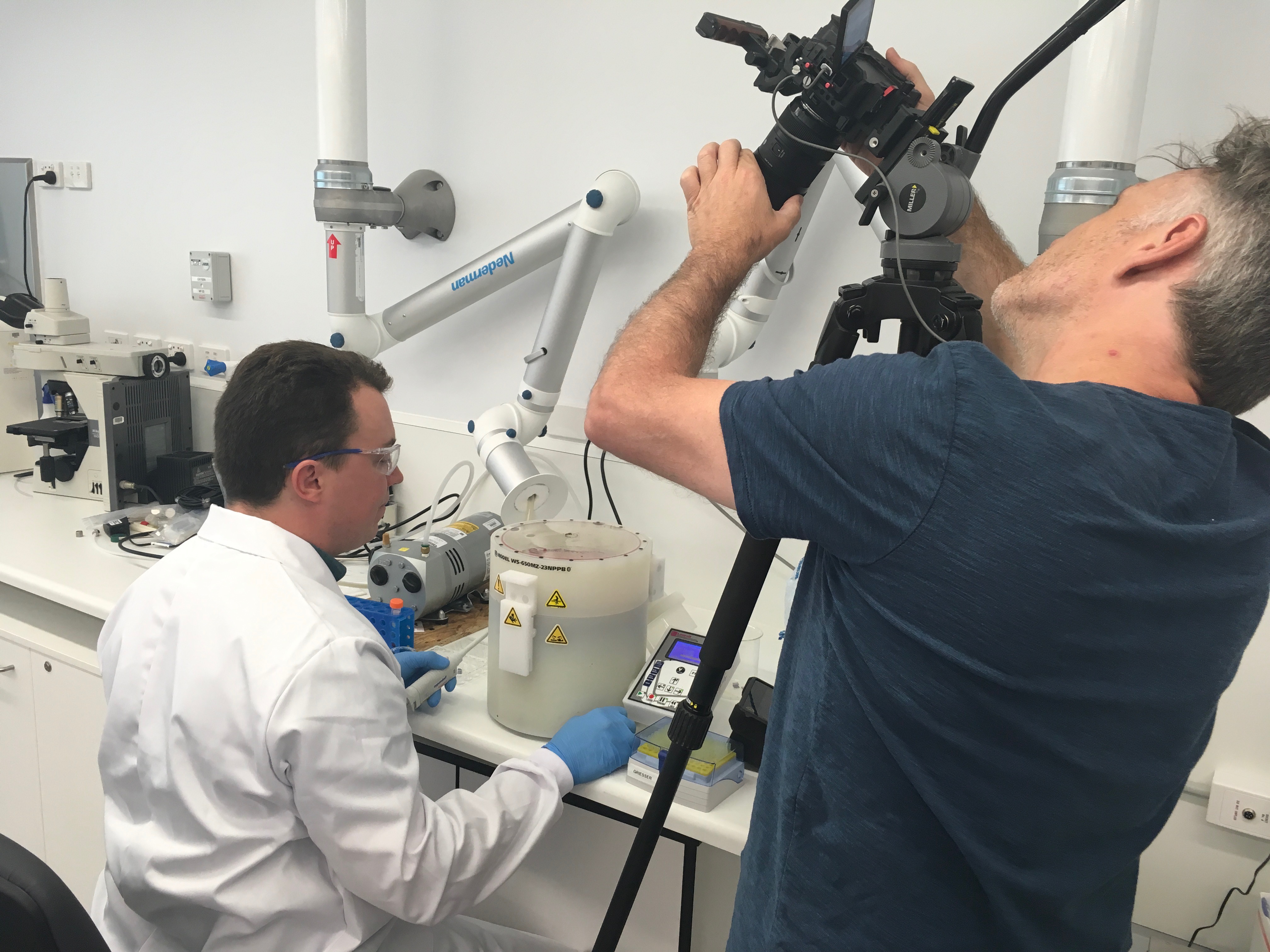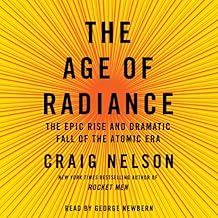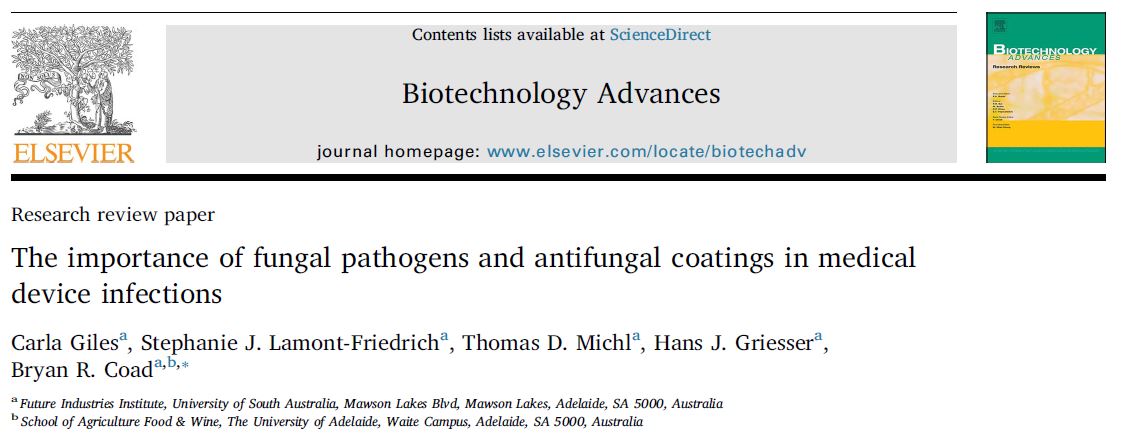It’s been quite a while since I’ve updated the blog and I’ve missed capturing some of the important updates.
Starting after this, I’ll retroactively be posting updates that I’ve summarised for the past little while.

It’s been quite a while since I’ve updated the blog and I’ve missed capturing some of the important updates.
Starting after this, I’ll retroactively be posting updates that I’ve summarised for the past little while.
Welcome to my webpage on my World Biomaterials Congress 2020 presentation:
Here come the fungal superbugs. What are the biomaterials strategies for combatting them?
This post contains information related to my oral presentation at the World Biomaterials Congress 2020.
Questions? Contact?
If you have questions or collaborative ideas, please get in touch.
Email: bryan.coad@adelaide.edu.au
Twitter DM: @DrBryanCoad
Additions & corrections:
After uploading this presentation, I realised that one point which may not have been clear is about the potential applicability of the antifungal surface coating. The covalently-attached antifungal surface coatings would be surface active and best applied to implantable medical devices as a preventative measure, but not as a way of eliminating or breaking up established biofilms when infections have already been established.
References
Reviews of antifungal surface coatings:
The importance of fungal pathogens and antifungal coatings in medical device infections. C Giles; SJ Lamont-Friedrich; TD Michl; HJ Griesser; BR Coad. Biotechnol Adv 2018, 36, 264-280. DOI: 10.1016/j.biotechadv.2017.11.010
Anti-infective Surface Coatings: Design and Therapeutic Promise against Device-Associated Infections. BR Coad; HJ Griesser; AY Peleg; A Traven. PLoS Pathogens 2016, 12, e1005598. DOI: 10.1371/journal.ppat.1005598
Biomaterials surfaces capable of resisting fungal attachment and biofilm formation. BR Coad; SE Kidd; DH Ellis; HJ Griesser. Biotechnol Adv 2014, 32, 296-307. DOI: 10.1016/j.biotechadv.2013.10.015
On the surface of it: the role of materials science in developing antifungal therapies and diagnostics. BR Coad. Microbiology Australia 2015, 36, 71-73. DOI: 10.1071/Ma15024
Peer-reviewed papers on antifungal surface coatings:
Surface coatings with covalently attached anidulafungin and micafungin prevent Candida albicans biofilm formation. J Naderi; C Giles; S Saboohi; HJ Griesser; BR Coad. Journal of Antimicrobial Chemotherapy 2019, 74, 360-364. DOI: 10.1093/jac/dky437
Surface-grafted antimicrobial drugs: Possible misinterpretation of mechanism of action. J Naderi; C Giles; S Saboohi; HJ Griesser; BR Coad. Biointerphases 2018, 13, 06E409. DOI: 10.1116/1.5050043
Plasma activated coatings with dual action against fungi and bacteria. B Akhavan; TD Michl; C Giles; K Ho; L Martin; O Sharifahmadian; SG Wise; BR Coad; N Kumar; HJ Griesser; MM Bilek. Applied Materials Today 2018, 12, 72-84. DOI: 10.1016/j.apmt.2018.04.003
Caspofungin on ARGET-ATRP grafted PHEMA polymers: Enhancement and selectivity of prevention of attachment of Candida albicans. TD Michl; C Giles; P Mocny; K Futrega; MR Doran; HA Klok; HJ Griesser; BR Coad. Biointerphases 2017, 12, 05G602. DOI: 10.1116/1.4986054
Facile single-step bioconjugation of the antifungal agent caspofungin onto material surfaces via an epoxide plasma polymer interlayer. D Michl; C Giles; AT Cross; HJ Griesser; BR Coad. RSC Advances 2017, 7, 27678-27681. DOI: 10.1039/c7ra03897f
Chlorine-rich plasma polymer coating for the prevention of attachment of pathogenic fungal cells onto materials surfaces. SJ Lamont-Friedrich; TD Michl; C Giles; HJ Griesser; BR Coad. Journal of Physics D-Applied Physics 2016, 49, 294001. DOI: 10.1088/0022-3727/49/29/294001
Antifungal coatings by caspofungin immobilization onto biomaterials surfaces via a plasma polymer interlayer. SS Griesser; M Jasieniak; BR Coad; HJ Griesser. Biointerphases 2015, 10, 04A307. DOI: 10.1116/1.4933108
Surface coatings with covalently attached caspofungin are effective in eliminating fungal pathogens. BR Coad; SJ Lamont-Friedrich; L Gwynne; M Jasieniak; SS Griesser; A Traven; AY Peleg; HJ Griesser. Journal of Materials Chemistry B 2015, 3, 8469-8476. DOI: 10.1039/c5tb00961h
Information on this website:
Two new publications on Antifungal Surface Coatings
The Importance of Fungal Pathogens and Antifungal Coatings in Medical Device Infections
Where are we heading with anti-infective medical devices?
New ways of thinking about the use of antibiotic drugs
New Publication in Microbiology Australia
University of South Australia to lead international team in combating devastating fungal infections
Site Navigation
Welcome to my webpage on my World Biomaterials Congress 2020 presentation:
The blind pathogen. Bioinspired and responsive materials for understanding the role of microbial surface sensing in the causes of plant and animal fungal diseases
This post contains information related to my oral presentation at the World Biomaterials Congress 2020.
Questions? Contact?
If you have questions or collaborative ideas, please get in touch.
Email: bryan.coad@adelaide.edu.au
Twitter DM: @DrBryanCoad
Additions & corrections:
On slide 3 I showed the microfluidic device from Prof Daniel Irimia, but failed to give his affiliation. Prof Irimia is researcher and Deputy Director at Massachusetts General Hospital and Harvard Medical School, and organiser of the Fungus Olympics, an event in which my lab participated. You can read more about my involvement in the Fungus Olympics here.

References
Published paper on biodegradable materials:
Visualizing Biomaterial Degradation by Candida albicans Using Embedded Luminescent Molecules To Report on Substrate Digestion and Cellular Uptake of Hydrolysate. BR Coad; TD Michl; CA Bader; J Baranger; C Giles; GC Gonçalves; P Nath; SJ Lamont-Friedrich; M Johnsson; HJ Griesser; SE Plush. ACS Applied Bio Materials 2019, 2, 3934-3941. DOI: 10.1021/acsabm.9b00520
Reviews of fungi/plant relationships:
Cell Wall Responses to Biotrophic Fungal Pathogen Invasion. Annual Plant Reviews. J Chowdhury; BR Coad; A Little. 2019, 1001-1030. DOI: 10.1002/9781119312994.apr0634
Perspective on antifungal surface coatings for human health
Anti-infective Surface Coatings: Design and Therapeutic Promise against Device-Associated Infections. BR Coad; HJ Griesser; AY Peleg; A Traven. PLoS Pathogens 2016, 12, e1005598. DOI: 10.1371/journal.ppat.1005598
Information on this website:
Visualizing Biomaterial Degradation by Candida albicans Blog post on this paper
Blog post on the Fungus Olympics
Live cell imaging video of Blumeria graminis on a biomimetic surface coating
Site Navigation
I want to tell the stories behind some of my publications: why the work was done, who funded it, the roles of team members, or stumbling across unexpected results.
In this post, I’ll tell the story of the team effort behind our latest paper in the journal ACS Applied Bio Materials.
I’d like to highlight the great work from PhD student Javad Naderi.
Javad has published two papers on antifungal surface coatings.
The first, published in the Journal of Antimicrobial Chemotherapy, is on covalent coupling of two members of the echinocandin antifungal drug glass to surfaces. Both anidulafungin and micafungin surface coatings were highly antifungal vs Candida albicans.

Surface coatings with covalently attached anidulafungin and micafungin prevent Candida albicans biofilm formation. doi.org/10.1093/jac/dky437
However, perhaps the most important finding was that the anidulafungin surface killed yeast and prevented biofilm, and could be washed and rechallenged at least 5 times without losing efficacy.
This finding supports a mechanism of action where the drug is:
Along with previous publications on the other approved echinocandin, caspofungin, there is more evidence to suggest that the echinocandin drug class can be antifungal even when immobilised on surfaces (i.e. does not need diffusion to reach drug targets). Exactly how this happens is an active area or research for us.
The second explores the surface activity of another drug class, the polyenes. At first, it looks like drugs like amphotericin B remain active when attached to surfaces; however, if you are careful and you make sure to wash off ALL traces of loosely adsorbed compounds (leaving only contently attached) then this effect is eliminated.
Thus, not all surface coatings prepared using covalent attachment of antifungal drugs actually work.

Surface-grafted antimicrobial drugs: Possible misinterpretation of mechanism of action. doi.org/10.1116/1.5050043
Failure to account for compounds that can be washed off and possible misinterpretation of mechanism of action should be an issue that researchers are made aware of.
This article was a Featured Article and a Scilight published in the journal Biointerphases.
Recently, Dr Sarah Kidd and I participated in the Fungus Olympics. This event is an international competition between laboratories to see how fungal strains use hyphae to navigate microscopic obstacles.
I wanted to share here my experience and fun I had participating in this event. Also, the event was important because we are able to learn much about how fungi sense surfaces: an important aspect of the way in which they cause diseases.
This has developed into an interesting story and I pitched the idea to The Conversation. I have been working on the article a great team there and the piece is nearing completion. Hopefully it will be soon when I can share the published final version.
Until then, I will tease a video from the event which is the first video that I’ve uploaded to YouTube. It shows one of our “athletes” navigating some of the microfluidic obstacles which make up the “events” in the competition.
Earlier this year, UniSA produced a video on our Research Themes Investment Scheme project. In this project we describe new materials that release antimicrobial compounds on demand.
Thomas, Hans, Pratiti and I had a lot of fun making this video. Here are some of behind the scenes photos from the production.



In 2017, my daily commute (driving) increased from about 30 minutes to 90 minutes giving me the challenges of battling traffic, but also the opportunity to listen to audiobooks. The Libraries of South Australia allow users to borrow audiobooks. This has been a treasure trove of entertainment and learning, as I have devoured a banquet of excellent books, both fiction and non-fiction.
While I have listened to a number of biographies and fictions, I have particularly enjoyed non-fiction books on science. Below are my top five, starting at my #1 pick.
#1 The Age of Radiance: The Epic Rise and Dramatic Fall of the Atomic Era by Craig Nelson.

This book gives the history of the discovery of radiation and presents a fascinating journey from Curie to Fukushima. The biographies are rich and enthralling. I was particularly captivated by the stories of the Curies, and their remarkable achievements. Also, the role of Lise Meitner was exceptionally well covered, marking her great achievements and showing how unjust it was in her not being awarded the nobel prize with Otto Hahn. The biography of Enrico Fermi was inspiring. Teller and Oppenheimer were beautifully compared and contrasted. The book ends in discussing the risks and benefits associated with the modern use nuclear power and wonders if we are too risk adverse, particularly when comparing human loss and suffering at the hands of both nuclear power and fossil fuels.
#2 Thinking Fast and Slow by Daniel Kahneman
![Thinking, Fast and Slow by [Kahneman, Daniel]](https://images-fe.ssl-images-amazon.com/images/I/41Gl2kqMlCL.jpg)
Coming from a background in natural science, I was not aware of Nobel Prize winner Daniel Kahneman’s research in cognitive sciences. This book literally rewired my mind. Kahneman’s research elegantly shows the power of cognition and its wide implications into unconscious biases and decision-making. This book has genuinely caused me to reflect on my own cognitive biases and to understand the eponymous two agents (fast and slow) that influence my own decisions. I can say that I have implemented some of the described techniques into grant writing to present my ideas with more cognitive ease.
#3 AC/DC: The Savage Tale of the First Standards War by Tom McNichol
![AC/DC: The Savage Tale of the First Standards War by [McNichol, Tom]](https://images-fe.ssl-images-amazon.com/images/I/51zo70FKlAL.jpg)
AC/DC is a history of the first standards war over electric current fought primarily between Edison and Westinghouse. There are many lessons here concerning basic scientific discoveries and how they are translated into products and services. Manipulation, deception, shoddy science and underhanded tricks were all part of the rivalry. Edison vehemently defended direct current as the future of electricity distribution and did everything in his power to show that AC was not just unsuitable, but deadly. In this endeavour, he vigorously promoted AC in the development of the electric chair to show just how dangerous it was, hoping to increase the adoption of DC. In the end, AC became the clear winner in the long distance transmission of electricity. However, author McNichol reminds us of the importance of DC in batteries and shows us that, not only is DC here to stay, but increased use in mobile devices and power storage means that the use of direct current has an important place in our future.
#4 A Brief History of Time by Stephen Hawking

I have always wanted to read this book and was glad to find it on audiobook. When originally released, this book became a classic and brought the strange word of astrophysics to popular culture. Nowadays, black holes, the big bang, and gravitational waves are all concepts that a prominent in society and we have Stephen Hawking’s bestseller to thank. I studied this book for its style in science communication and tried to peek in on the strategies that Hawking used to explain complex subjects simply. Besides being a fascinating look into contemporary astrophysics, the chapter describing Newton’s discoveries and approach to natural philosophy were completely fascinating and were presented exceptionally well.
#5 The Character of Physical Law by Richard Feynman

This book presents seven of Feynman’s lectures on physics. Each of the lectures covered material that I studied a long time ago as an undergraduate; however, I found Feynman’s lectures to be original and captivating. He is able to draw connections between physics and thermodynamics, quantum mechanics and gravitation, and brings together an enriching overview of the fundamentals. I secretly love thermodynamics and loved Feynman’s application of the second law to the distinction of the past and future.
How can we improve medical implants so that they combat microbial colonization and reduce the problem of implant-associated infections?
Basic science approaches for the design antimicrobial surfaces and coatings has been reviewed but it is clear that attention for fungal pathogens has been missing.
Fungal pathogens are important because they
We have published a new review entitled The Importance of Fungal Pathogens and Antifungal Coatings in Medical Device Infections.
https://www.sciencedirect.com/science/article/pii/S0734975017301520

The review article is online now. Click the image to go to the website.
Highlights include:
This review is a significant addition to our 2014 review Biomaterials surfaces capable of resisting fungal attachment and biofilm formation. Biotech Adv. 2014; 32: 296-307.
This was a massive team effort that progressed over the course of one year. Our team of five authors wrote 17 pages of printed text and reviewed 89 references. This is the most comprehensive and up-to-date review in the field. We hope that the discussion on materials design will become an invaluable resource for researchers and feed into broader thinking about the wider field of design of antimicrobial biomaterials and polymicrobial biofilms.

Materials strategies for incorporating antifungals onto and into biomaterials.
The following video shows a time-lapse video of Blumeria graminis f.sp. hordei germination on an artificial surface coating conducted by Dr Bryan Coad and Dr Alan Little, University of Adelaide. The coating was made from hexacosanal (C26 aldehyde) mixed with Formvar ® resin and then cast onto glass slides using the previously published method (1).
Live cell imaging was conducted over 6 hours and compressed into a 5 second video. This video will automatically restart and loop.
In the first hour, primary germ tubes are extended and conidia “tilt” and roll slightly. A small proportion of the conidia develop appressorial germ tubes that extend away from the body. Some of these differentiate into hooked appresoria and attempt penetration of the surface coating. After 6 hours, low humidity in the chamber caused the conidia to desiccate.
This video is used to exemplify the method of live-cell imaging and visualisation of germination on artificial coatings. This technique can be used to visualise germination on other cuticle-mimetic surfaces (such as plasma cuticle mimics).
Using this method, we hope to understand (through visulisation) how fungal germ tubes are developed in response to surface chemistry and topography. Understanding the physicochemical features of surfaces will aid in the discovery of new agents to protect crops from diseases.
References